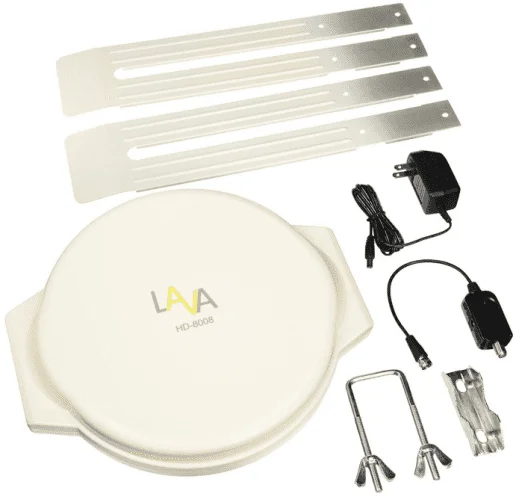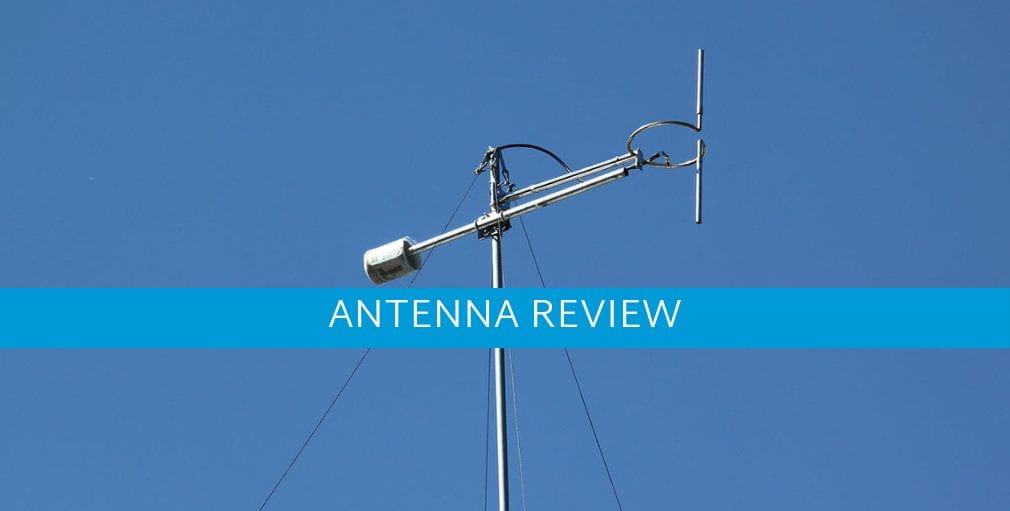Almost every time you mention buying an omnidirectional TV antenna, you’ll get comments like “you’ll never get good reception” or “you don’t have broadcast towers surrounding you.” And while these may be right for some folks, others live in densely populated areas that could very much use an omnidirectional antenna.
If you’re one of those folks, we’ve got an excellent suggestion for you – the Lava OmniPro HD8008 review. We’re looking at one of the best omnidirectional antennas you’ll come across on the market nowadays, and it does not cost too much, either. Without wasting any more of your time, let’s take a look at the details of the OmniPro HD8008 and see whether this should be your next investment.

You may want to check here first why an omnidirectional TV antenna is better than a normal one.
The HD8008’s Design
Kicking things off with the outside, we have to be honest – the design isn’t really impressive. It looks very simple, and we don’t want to use “ugly.” You have a circular antenna with two metal pieces sticking out when you mount it. However, the design of the OmniPro isn’t meant to look good. Instead, it’s meant to be functional and be able to receive signals from all directions.

There’s one more thing here – the antenna has an anti-UV coating and is completely waterproof. If you’re worried about the weather damaging it, you shouldn’t be. And it’s also shielded to reduce interference as much as possible.
Inside the box, it will also come with a mounting pole. The pole has an adjustable angle for the base pivot, which lets you set it up for flat, vertical, or angled use. There are also wall mounts and brackets if that’s the route you want to take with your antenna. It’s one option that lets you set it up any way you want. You can also rotate it 60 degrees to get even better reception.

Now, we’re always talking about an “omnidirectional” design. But what is that, anyways? Well, with a regular antenna, you’d have to point it toward the direction of the broadcast tower. However, if you have an omnidirectional one, it can receive channels from any direction. This makes it much better for densely populated areas, where there are many surrounding towers and objects from the signal to bounce.

And while this design does come with one big loss – range- the HD8008 deals with this quite well. The ideal distance is between 40 and 80 miles, depending on the conditions, signal, and surrounding objects. It can easily reach over 100 miles of range if you give it ideal conditions. For an omnidirectional antenna, this is truly impressive. What helps quite a bit here, actually, is the built-in amplifier. It has high gain but very low noise, allowing it to function well.
Features and Functionality
A functional design and excellent specs “on paper” don’t make an outdoor antenna great – the functionality does. The antenna has a built-in dipole that allows you to receive both UHF and VHF signals and FM, making for a very versatile option. There’s also DVB-T, DMB-T/H, ATSC, and ISDB-T. With this, you can expect 1080p, Full HD, and 4K images on your TV set.
Mounting and Using the HD8008
Like most large items, you could order online, but the HD8008 doesn’t come preassembled. However, assembling it and setting it up on the pole should be a piece of cake. All the components are included, so you can quickly get things up and running.

A huge benefit is that you don’t have to aim for the broadcast towers. With an omnidirectional design, you should be able to receive channels regardless of how you set it up.
Wrapping things up – Is it any good?
As we mentioned at the beginning , an omnidirectional antenna isn’t good for everyone. A directional antenna may do a better job if you live in a rural area and don’t have many towers around you.
However, if you live in a city or other urban area with many tall buildings the signal could bounce off of, and you have a couple of towers surrounding you, you’re pretty much set to go with the HD8008. You’ll get a lot of free channels, and chances are you’ll be able to cut the cord completely!

